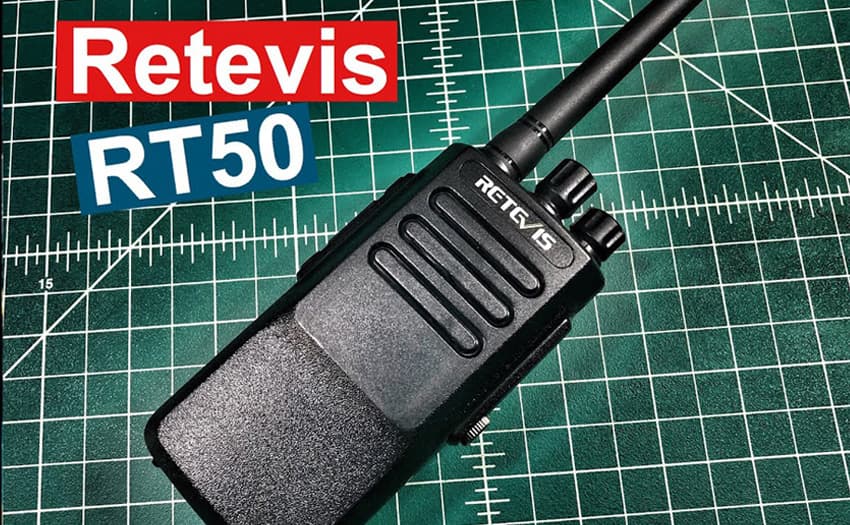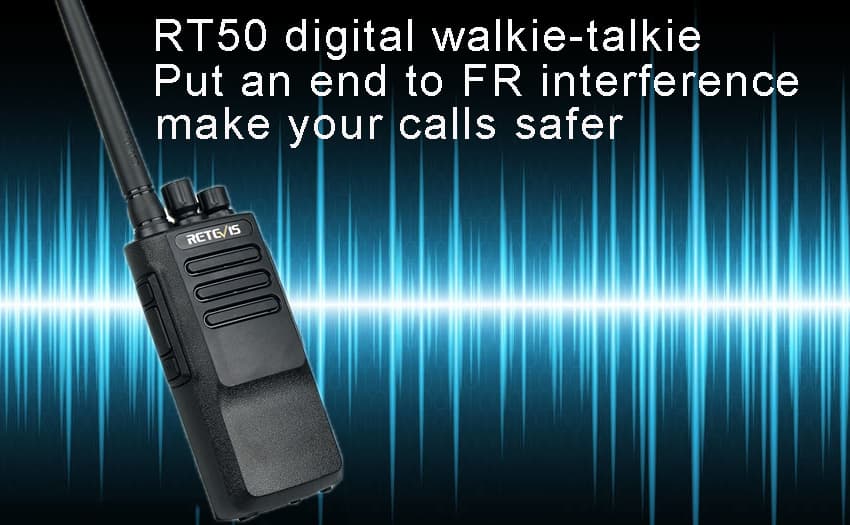Retevis RT50-without radio frequency interference digital handheld radio

How Radio Frequency(RF) interference can have a big impact on your radio communication, and what we can do about it?
Your organization’s high-performing radio communication solutions keeps business running and customers satisfied. But what can you do when service drops or slows?
One big culprit of radio issues are radio frequency (RF) interference, which is a common problem faced by many radio teams, whether running a network for a small office or a large enterprise. With all the devices out there fighting for a connection, RF interference will only continue to make negative impacts without the right solutions in place.
It’s first important to understand what RF interference is and what causes it, followed by the ways to mitigate this interference, including solutions from Retevis radio solutions.
What is radio frequency(RF) interference?
RF interference occurs when there are radio frequency signals that are essentially competing with one another. And this isn’t something new that was created with radio, it’s been around as far back as we’ve had radios.
Interference looks a bit different today with the host of electronic devices we have in our offices, homes, cars, and now even on our bodies via the rise of the Internet of Things (IoT) and wearables. The Statista Research Department forecasts that by 2020, there will be close to 6.58 network-connected devices per person across the globe. That’s a lot of competition.
There are many devices that compete especially on the standard radio frequency, such as Bluetooth devices and cordless phones. However, sources of RF interference aren’t all wireless and include an assortment of electronic devices in your home, like a microwave.
All electronic devices emit electromagnetic radiation (or “noise”), and this traffic causes other equipment to pick up their signals, mistaking it for another signal. This is what causes that buzz or static noise that you may hear in your speakers when another device is interfering nearby.
What is the performance of radio frequency interference in walkie-talkies?
When using walkie-talkies, mainly when using ordinary license free analog walkie-talkies, we often find that the walkie-talkie opportunities have no reason for noise, mixed noise, and sometimes we will receive signals from other people, which is often said String frequency. These are caused by radio frequency interference. The occurrence of radio frequency interference, on the one hand, indicates that the quality of the walkie-talkie is not high, on the other hand, it also reflects the use environment of the walkie-talkie, and the signal interference is relatively serious.
How to avoid or minimize RF interference in radio solutions?
If your radio is experiencing a lot of RF interference, it could be a design issue. It’s always important to conduct a site survey, which accounts for high-traffic areas and places where a lot of interference is likely to occur. This allows you to address some of these problems from the start.
Another simple fix would be to turn off nearby devices when they’re causing RF interference, if possible. This, of course, requires knowledge of what the culprits are, so some trial and error may be needed before you find the cause.
One of the most effective ways to reduce radio RF interference is to replace high-quality radios, ordinary analog radios, because they use analog signals, they are susceptible to RF interference and cross-frequency phenomenon, while digital radios are designed with digital technology. The digitization of voice signals requires a specific digital encoding method and a specific baseband modulation form, and a digital signal processor optimized data communication mode, which means that all modulations on the transmission frequency of the digital walkie-talkie are digital. Digital walkie-talkies can make better use of spectrum resources, improve voice quality, enhance and improve voice and data integration, change the weakness of control signals that decrease with the increase of communication distance, and provide better data processing and interface functions.
However you begin to address RF interference in your network, one thing’s certain: you must have visibility into what’s going on to quickly find an accurate solution.

RT50 digital walkie-talkie without radio frequency interference
Retevis wireless radio communication solutions RF interference reduction optimization
Retevis radio communication solutions using high-quality Retevis RT50 digital radio walkie-talkie. It can completely solve the problem of radio frequency interference, improve the quality of the call, and also enhance the security of the call, ensure that your call will not be heard by other people, and also ensure that you will not receive other irrelevant information.
Retevis solutions focus on supplying professional radio solutions for all industrie, if you need any radio communication solutions or have idea, please feel free to leave messages or contact us by:
Facebook: www.facebook.com/retevissolutions
Email: info@retevis.com






